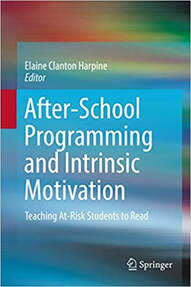What is the three-cueing system?
If your children are taught when they have trouble reading a word to (1) look at the picture, (2) reread the passage and see if they can figure out a word that might fit, or (3) to look at the first letter in the word and guess what the word might be, then your child has been taught the three cueing system or some derivative of that system. Many reading programs include curriculum that specifically tries to teach students how to make better “guesses.”
The idea originated from a descriptive study published by Kenneth Goodman in 1965. Notice that this was a descriptive study, not a research data-based study. However, there isn’t scientific research to support the three-cueing system. Yet, it continues to be taught and most likely will even be taught this fall, either in class or online.

The three-cueing system is bad because guessing doesn’t work. Guessing teaches students to ignore letter sounds and concentrate on the word as a whole (more in keeping with whole language techniques). Instead, of learning to break words down into sounds, students focus on guessing.
Children often come to my reading clinic completely and totally confused. They cannot guess the correct word. Oh yes, they guess, but 99.9% of the time they guess wrong. That is why the first thing I teach students when they arrive at my reading clinic is: “We never guess; we sound it out.”
Students should also not be taught to skip words. In my after-school reading program, a student is never allowed to skip a word. We say that the word is tricky; therefore, we “capture” the word and learn it. We learn how to pronounce the word, what the word means, how to spell the word, and how to write it correctly, and we learn how to use the word in a sentence. Then, we go back and return to our reading passage. A student cannot comprehend a passage or story if they do not understand the meaning of the words in that passage or story. Therefore, guessing and skipping do absolutely no good.
So, how do we get rid of cueing?
I have no idea. Publishers and curriculum writers make massive amounts of money by selling teaching material that focuses on cueing. No, they don’t want to change. Education has entered the world of politics and money; education is no longer just about learning.
Prof. Kerry Hempenstall, a psychologist, from the University of Australia, explains that cueing is so popular because it allows teachers to avoid using phonics.
“Perhaps the three-cueing system is ubiquitous in education training courses, and popular among teachers because it appears to reconcile the long-standing conflict between a phonics-emphasis curriculum and a literature-based curriculum [whole language approach].”
Phonics enthusiasts are certainly very vocal about wanting to get rid of cueing. Yes, they want to replace cueing with phonics. The only problem with that is that phonics doesn’t work for every student.
Would phonics work as a replacement for cueing?
Cueing doesn’t work, but phonics doesn’t work for all students either. Yes, we need change, but I do not see how dropping three-cueing system and adopting phonics will help. Phonics is, at best, a mediocre teaching method that is plagued by problems. Let’s look at some of the research.
Phonics is not universally supported by scientific research
Even though the strongest critics of cueing suggests that phonics would be better, their claims of compatibility with the “science of reading” are not universally accepted, even by many phonics enthusiasts.
- Jeanne Sternlicht Chall (1967), an advocate for systematic phonics, visited over 300 classrooms. While she concluded that systematic phonics was superior to “look say” whole language in 90% of the classrooms, she also clearly warned that a purely phonics approach would leave many students failing.
- Linnea C. Ehri studied 66 phonics vs. whole language groups and again found systematic phonics to be superior to whole language but also found that systematic phonics “… did not help low achieving readers that included students with cognitive limitations.”
- As the National Reading Panel (National Reading Panel, 2000) clearly stated, “…systematic phonics approaches are significantly more effective than non-phonics [whole language]…. However, phonics instruction failed to exert a significant impact on the reading performance of low-achieving readers in 2nd through 6th grades….” (p. 94). Phonics simply does not work for many students.
- In 2013, Tunmer and associates also stated from their research that Reading Recovery (often used to teach struggling students from the classroom) was also not effective with failing, struggling students. As they stated, “Students with phonological difficulties did poorly [in Reading Recovery].”
- Sebastian P. Suggate’s 2016 study compared 71 phonemic and phonics intervention groups and found that “… phonemic awareness interventions showed good maintenance of effect… phonics tended not to.”
So, what are we left to conclude?
Phonics is better than whole language, and phonics is better than cueing, but phonics is not the answer we need in the classroom.
Remember, phonics was first introduced in 1690; so phonics is neither a new approach or a new teaching method. Phonics uses a list of rules that predict when a letter of the alphabet will use a particular letter-sound. As Sarah Forrest, reading specialist with the Easyread System, explains—such phonics rules are only successful 60% of the time. That means that, almost half of the time, phonics rules give an inaccurate prediction or the rule is simply wrong. What are struggling and failing students supposed to do the rest of the time?
Read More: When Phonics Fails
Forrest is not the only reading specialist pointing out problems with the phonics teaching method. Gerald Hughes, Director of the Neuro-Linguistic Learning Center and author of the book, Gifted—Not Broken: Overcoming Dyslexia, ADD and Other Learning Challenges, states that long-standing research shows that
“… 20% of all children will show little or no lasting improvement in reading ability using phonics-based programs…. Using a phonics-based program on this particular group of children, is more than likely doomed to failure because it is focused on the very weaknesses of the child. Experience has repeatedly shown that when subjected to an extensive phonics-based program, many of these children will experience frustration, anger and ultimately continued failure.”
So, why do the schools keep teaching phonics?
“Until recently, almost everyone thought that we store words by having some type of visual image of every word we know…. Many teaching approaches [like phonics and whole language] presume this. We assume that if students see the words enough, they will learn them. This is not true…. I believe this assumption that we store words based on visual memory is a major reason why we have widespread reading difficulties in our country…. The big discovery regarding orthographic mapping is that this oral “filing system” is the foundation of the “filing system” we use for reading words. We have no “visual dictionary” for reading that runs alongside our oral dictionary.” (David A. Kilpatrick in Equipped for Reading Success, pp. 27-43).
We must stop letting old worn-out ideas and theories stand in the way of teaching methods that improve learning in the classroom. We need change, now.
Is there any hope for changing teaching methods used in the classroom? I personally do not hold out much hope for change in the public-school educational system. Public education is caught up in a quagmire of political haggling.
I’m a psychologist. I must teach students how to read in order to help them correct the mental and psychological problems they are facing. I can’t use a failing system. In many instances, I am working with struggling and/or failing students. Students come to my program because they have failed in the classroom using whole language, balanced literacy, and even phonics. They have lost confidence; they no longer believe it’s possible for them to learn to read. I need a teaching method that restores their self-efficacy (belief that they can learn again) by teaching them to read effectively. I use vowel clustering.
Vowel clustering works with the brain and the way the brain processes phonemes or letter sounds. Vowel clustering uses visual, auditory, and hands-on teaching techniques. As you can see from the examples on my blog, I use art therapy to help heal the sense of failure.
Vowel clustering teaches students to match vowel sounds with their corresponding letter symbols. This emphasizes the oral letter-sound relationship. Remember, we are training the brain, building “pathways” in the brain. When these neural pathways are developed, reading can take less than half a second. Therefore, it is important to organize how we teach so students can organize how they learn. We want to work with the brain, not against it. The vowel clustering teaching approach presents a visual and oral picture that struggling students can immediately identify with. Visually, students match words by how they sound not by how they are spelled. This teaches children that words can be pronounced one way but spelled another. This visual-auditory learning technique allows students to both see and hear letter sounds (phonemes).
Read More: Vowel Clustering Works Better Than Phonics
Vowel clustering also teaches handwriting because it is very important for students to write words correctly as they practice reading, spelling, and matching written letters to oral sounds. For more information on how vowel clustering works, watch for my forthcoming book, “Why Can’t We Teach Children to Read? Oh but Wait, We Can.”
 You might want to look at After-School Prevention Programs for At-Risk Students: Promoting Engagement and Academic Success. If you are organizing or setting up an after-school program, this book gives you step-by-step directions for organizing an effective program. A troubleshooting checklist helps you organize a new program and each chapter contains a hands-on activity. Some distributors are offering a special price this month, just in time to help you plan your program. |  For background ideas, you can read my book After-School Programming and Intrinsic Motivation: Teaching at-Risk Students to Read. This book explains the causes of reading failure and shows how group-centered interventions can help children learn to read and enhance their mental health. |
 RSS Feed
RSS Feed
